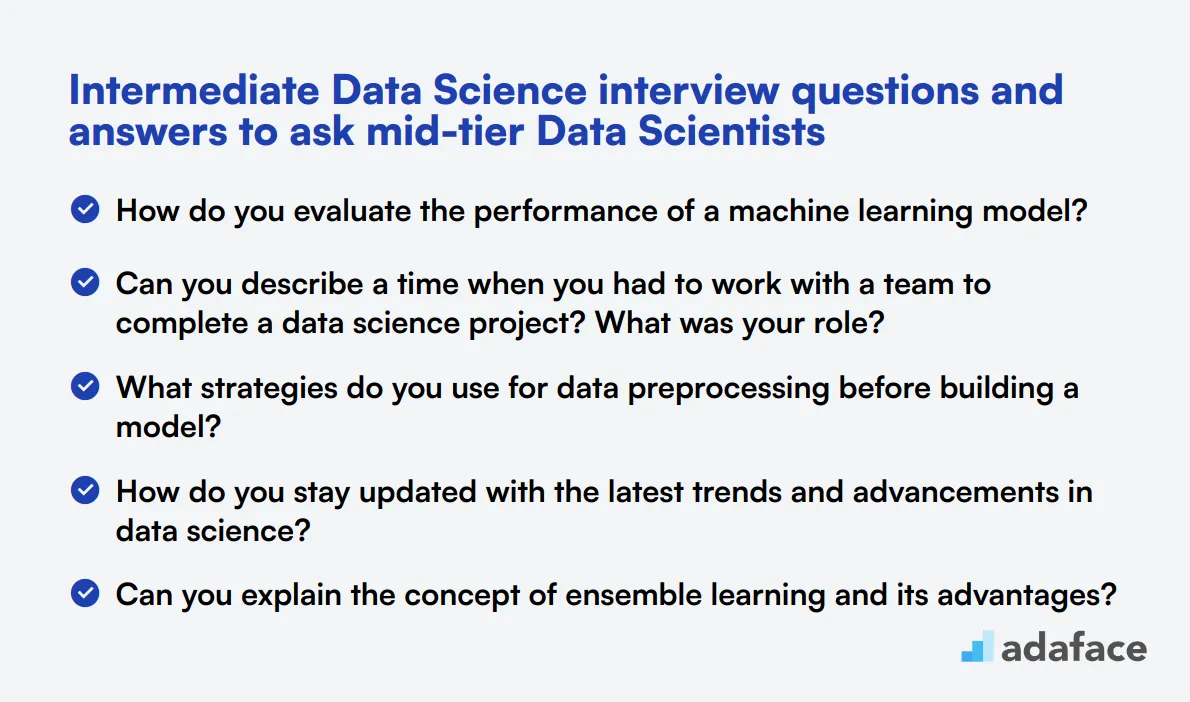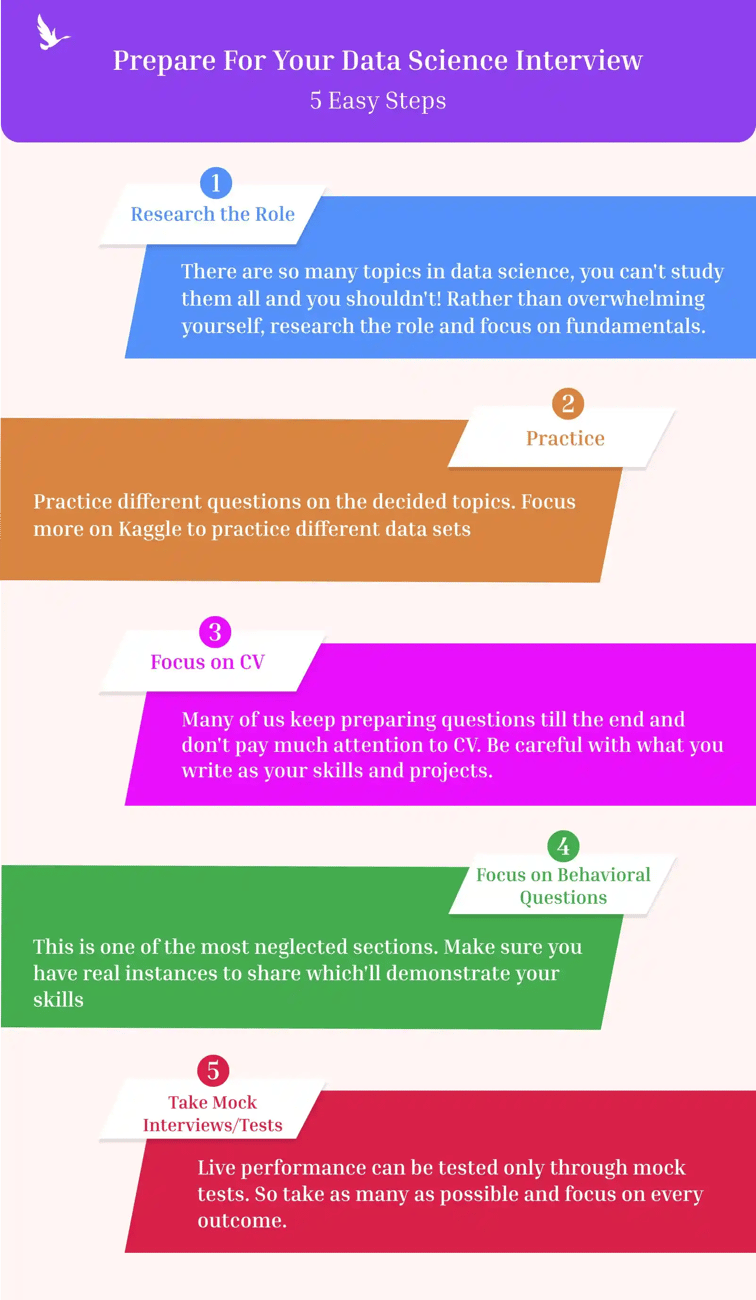All Categories
Featured
Table of Contents
Amazon currently normally asks interviewees to code in an online paper file. However this can vary; it might be on a physical white boards or a digital one (Scenario-Based Questions for Data Science Interviews). Consult your recruiter what it will be and exercise it a whole lot. Since you understand what questions to anticipate, let's concentrate on how to prepare.
Below is our four-step preparation plan for Amazon information researcher prospects. Before investing 10s of hours preparing for an interview at Amazon, you need to take some time to make sure it's in fact the right company for you.

Practice the method making use of instance questions such as those in area 2.1, or those about coding-heavy Amazon positions (e.g. Amazon software program growth designer meeting guide). Additionally, method SQL and programs concerns with medium and difficult level examples on LeetCode, HackerRank, or StrataScratch. Take an appearance at Amazon's technological subjects page, which, although it's made around software application development, should provide you a concept of what they're watching out for.
Keep in mind that in the onsite rounds you'll likely need to code on a whiteboard without having the ability to perform it, so exercise creating through issues on paper. For artificial intelligence and data questions, supplies on-line programs created around statistical chance and other useful subjects, a few of which are cost-free. Kaggle additionally offers free programs around initial and intermediate artificial intelligence, in addition to information cleaning, data visualization, SQL, and others.
Tools To Boost Your Data Science Interview Prep
See to it you contend the very least one story or example for each and every of the concepts, from a wide variety of positions and projects. A terrific means to practice all of these various types of inquiries is to interview yourself out loud. This may sound strange, but it will substantially improve the means you interact your responses during a meeting.
Trust fund us, it works. Practicing on your own will just take you thus far. Among the primary difficulties of information scientist interviews at Amazon is interacting your various responses in such a way that's understandable. Therefore, we strongly recommend exercising with a peer interviewing you. Ideally, a fantastic area to begin is to practice with buddies.
They're unlikely to have insider expertise of interviews at your target company. For these reasons, many candidates avoid peer mock interviews and go straight to mock meetings with a professional.
Top Challenges For Data Science Beginners In Interviews

That's an ROI of 100x!.
Data Scientific research is rather a big and varied field. As a result, it is truly tough to be a jack of all professions. Traditionally, Data Scientific research would concentrate on maths, computer technology and domain proficiency. While I will quickly cover some computer technology basics, the bulk of this blog will mainly cover the mathematical basics one might either require to review (or also take a whole training course).
While I comprehend a lot of you reviewing this are extra mathematics heavy by nature, recognize the bulk of data scientific research (risk I claim 80%+) is collecting, cleansing and processing information into a valuable type. Python and R are one of the most prominent ones in the Data Science room. However, I have actually also come across C/C++, Java and Scala.
Faang Interview Preparation Course

Usual Python collections of selection are matplotlib, numpy, pandas and scikit-learn. It is common to see the majority of the data scientists being in one of two camps: Mathematicians and Database Architects. If you are the 2nd one, the blog will not aid you much (YOU ARE ALREADY OUTSTANDING!). If you are among the first group (like me), chances are you really feel that composing a dual nested SQL question is an utter nightmare.
This might either be collecting sensing unit information, analyzing sites or bring out surveys. After collecting the information, it needs to be transformed right into a usable form (e.g. key-value store in JSON Lines files). As soon as the data is collected and placed in a useful style, it is vital to perform some information top quality checks.
Building Career-specific Data Science Interview Skills
In situations of scams, it is very common to have heavy course discrepancy (e.g. only 2% of the dataset is real fraudulence). Such info is essential to pick the suitable options for feature engineering, modelling and model analysis. For more info, inspect my blog site on Fraudulence Detection Under Extreme Class Inequality.

Common univariate analysis of choice is the histogram. In bivariate evaluation, each function is contrasted to various other attributes in the dataset. This would consist of correlation matrix, co-variance matrix or my individual favorite, the scatter matrix. Scatter matrices allow us to locate surprise patterns such as- functions that must be engineered with each other- functions that may need to be eliminated to stay clear of multicolinearityMulticollinearity is really a problem for multiple models like direct regression and thus needs to be taken treatment of appropriately.
Visualize utilizing internet use data. You will certainly have YouTube individuals going as high as Giga Bytes while Facebook Carrier users make use of a couple of Huge Bytes.
Another issue is making use of categorical values. While categorical values are typical in the information science world, recognize computer systems can just understand numbers. In order for the specific values to make mathematical feeling, it needs to be changed right into something numerical. Generally for specific values, it prevails to do a One Hot Encoding.
Coding Practice For Data Science Interviews
At times, having also numerous sparse dimensions will certainly obstruct the performance of the model. A formula commonly made use of for dimensionality decrease is Principal Components Analysis or PCA.
The usual groups and their sub groups are described in this area. Filter approaches are normally used as a preprocessing step. The choice of features is independent of any device finding out formulas. Instead, functions are picked on the basis of their scores in various statistical tests for their connection with the outcome variable.
Usual methods under this classification are Pearson's Connection, Linear Discriminant Evaluation, ANOVA and Chi-Square. In wrapper approaches, we attempt to make use of a subset of attributes and train a version using them. Based upon the reasonings that we draw from the previous version, we decide to add or remove attributes from your part.
Using Big Data In Data Science Interview Solutions
Usual approaches under this category are Onward Option, In Reverse Removal and Recursive Attribute Elimination. LASSO and RIDGE are usual ones. The regularizations are given in the formulas below as reference: Lasso: Ridge: That being said, it is to recognize the auto mechanics behind LASSO and RIDGE for meetings.
Managed Knowing is when the tags are available. Unsupervised Discovering is when the tags are not available. Obtain it? Manage the tags! Pun planned. That being claimed,!!! This error suffices for the interviewer to cancel the interview. One more noob blunder people make is not stabilizing the features before running the model.
. Guideline. Linear and Logistic Regression are one of the most basic and frequently utilized Equipment Learning formulas around. Before doing any kind of evaluation One typical meeting mistake individuals make is starting their evaluation with a more complicated design like Semantic network. No uncertainty, Neural Network is very precise. Standards are vital.
Latest Posts
Apple Software Engineer Interview Process – What You Need To Know
Best Free & Paid Coding Interview Prep Resources
Mastering The Software Engineering Interview – Tips From Faang Recruiters